I rarely drink a flavored or scented tea, but I have a real soft spot in my heart for Nuo Mi Xiang. The last time I drank Nuo Mi Xiang must have been on a beautiful, unseasonably warm spring day, too, because as soon as I lifted the lid on my gaiwan, the loveliness streaming in at me through the open back door seemed magically intensified. I'm very happy to have now doubled the strength of that association. Now maybe if when the weather gets intolerable again on its Portlandy way towards spring, I can use one or two of these as my secret weapon...
I was talking to the guy next to me tonight at the Lan Su Garden lecture. One of the things we were talking about is how glad he is to be old. (He's glad about that for a number of reasons, but one of which is that he doesn't have to find a job now, in the current slim pickings of micro-specialized possibilities.)
It's not something many people say, that they're glad to be old; not in those words, anyway. My partner talks — quite often, actually — about how glad she is not to be in high school anymore, or not to have to go through adolescence again, or whathaveyou, but that's kind of a different level. Maybe.
Anyway, one of the things that struck me most about the lecture tonight — and a very interesting lecture it was, "Lost in Translation, Found in Place: Identifying Traditional Cultural Elements in New Settings at Lan Su Chinese Garden" — was a couple of pictures of old gardens in China, in our sister city, Suzhou.
These gardens had a look of Age. It's a look I love; a look, I think, coveted and admired in many cultures, and one which is probably impossible to replicate. I guess it's as much of a feeling as it is a look, which might explain the non-reproducible quality. I've seen it in old teapots, too, and maybe even in trees, people.
These gardens, the teapots, seemed to have been worn down by time and by use, to have become thin in some essential way; like the molecular fabric of which they are made has been washed threadbare and porous. But there's something else, too. I think the feeling part comes from what replaces those lost molecules; it seems as if — just as the oils from tea leaves permeate the porous clay of an unglazed pot — it seems as if the walls and pathways of these old gardens have been permeated by the moods, the memories, and spirits that have inhabited them for years upon years upon years.
Shadow, Steam, Zisha from David on Vimeo.
Some quiet prettiness — this looks especially nice full screen.
My latest home tea adventure was a box of eleven astoundingly delicious samples from the Jing Tea Shop, in China. (Apparently the Canton Tea Co. is their reseller in the UK, so you may have tasted some of their teas without knowing it.)
I'm sure I'll be raving about the individual teas from time to time, as posts go by. However! What I want to talk about (and hopefully get some feedback on) today, is that at the bottom of every white, yellow, or, in this example, green tea's page, they post this tip:
The tea world's track record on issues of disseminating accurate information, making firm delineations between history and legend, and refraining from just straight up fabricating something because it makes a good story, has been pretty well documented to be far from spotless. But this relatively inconsequential — though quite useful — fact strikes me as more the kind of thing that is just such a part of the scenery of common practice that people who know it wouldn't often think to mention it.
I kind of hope so; I love finding out about that kind of thing, either in the mundane realm, or in terms of the deepest assumptions informing people's lives and world-views. It's sometimes shocking, and always fascinating. If it weren't for my partner, for example, I might never have really appreciated how, for an introvert like her, interacting with a group of people is usually draining and exhausting; to an extrovert like myself, it's energizing and exciting — sometimes to the point where I get so hopped-up on people I can't sleep. If it weren't for my friend who's family belongs to a conservative religious sect, I wouldn't have known that they have almost the exact same paranoid fantasies about liberals as we liberals have about conservatives — just reverse the names and there you go!
Anyway, coming back to tea. I actually noticed the efficacy of this "root" trick long before I realized tea doesn't have to come in a bag. When I would drink a cup of tea down to the last drop, or press out the bag, the second steeping of the bag would produce very weak tea indeed. (I can almost hear you tea people cringing!) But, if I allowed the bag to remain wet, even in a very small amount of liquid, the second cup would be much more satisfactory.
I guess this must rely on the same physical principle that causes a totally dry sponge to be almost incapable of absorbing water at low pressure. A damp sponge, on the other hand — probably due to some sort of capillary-based wicking effect — can absorb even the tiniest of dribbles. Makes sense if that holds true for tea leaves, as well.
So, have you heard of the root? Or, heard of the same concept, but under a different name? If so, I'd love it if you'd share the proverbial wealth of knowledge in the comments!
I'm sure I'll be raving about the individual teas from time to time, as posts go by. However! What I want to talk about (and hopefully get some feedback on) today, is that at the bottom of every white, yellow, or, in this example, green tea's page, they post this tip:
When you brew Chinese green tea in a gaiwan, always leave a little bit of tea in the gaiwan between each infusion. This is call [sic.] “the root” and will allow you to get the best of the green tea.I'm no expert, but I've been around a few tea blocks, and have never heard mention of "the root" before. I plugged Google's fourteen different Chinese translations of the English word "root" into Babelcarp, searched for "root" on the Tea Geek Wiki, and on Wikipedia, read several broadly and specifically related articles, and searched the Internet en général, all to no avail.
The tea world's track record on issues of disseminating accurate information, making firm delineations between history and legend, and refraining from just straight up fabricating something because it makes a good story, has been pretty well documented to be far from spotless. But this relatively inconsequential — though quite useful — fact strikes me as more the kind of thing that is just such a part of the scenery of common practice that people who know it wouldn't often think to mention it.
I kind of hope so; I love finding out about that kind of thing, either in the mundane realm, or in terms of the deepest assumptions informing people's lives and world-views. It's sometimes shocking, and always fascinating. If it weren't for my partner, for example, I might never have really appreciated how, for an introvert like her, interacting with a group of people is usually draining and exhausting; to an extrovert like myself, it's energizing and exciting — sometimes to the point where I get so hopped-up on people I can't sleep. If it weren't for my friend who's family belongs to a conservative religious sect, I wouldn't have known that they have almost the exact same paranoid fantasies about liberals as we liberals have about conservatives — just reverse the names and there you go!
Anyway, coming back to tea. I actually noticed the efficacy of this "root" trick long before I realized tea doesn't have to come in a bag. When I would drink a cup of tea down to the last drop, or press out the bag, the second steeping of the bag would produce very weak tea indeed. (I can almost hear you tea people cringing!) But, if I allowed the bag to remain wet, even in a very small amount of liquid, the second cup would be much more satisfactory.
I guess this must rely on the same physical principle that causes a totally dry sponge to be almost incapable of absorbing water at low pressure. A damp sponge, on the other hand — probably due to some sort of capillary-based wicking effect — can absorb even the tiniest of dribbles. Makes sense if that holds true for tea leaves, as well.
So, have you heard of the root? Or, heard of the same concept, but under a different name? If so, I'd love it if you'd share the proverbial wealth of knowledge in the comments!
"I've managed to bring the backlog down to a mere sixty-eight years," she announced with some small sense of achievement. "I hope to be able to start marking the papers of pupils who are still alive by the end of the decade."
"A very worthy aim," I replied, thinking carefully about how I could apply queuing theory in this instance. "Excuse the impertinence, but wouldn't it be better to reverse the queuing order so that the oldest papers were last marked? It would allow pupils to know their results sooner, and as far as I can see, would not be against the Rules, since queue direction is not specified."
She stared at me oddly, then smiled kindly after having given the matter no thought at all.
— Jasper Fforde, Shades of Grey
I, on the other hand, have been giving a lot of thought to the matter of why I'm keeping this log of my tea experiences. I've even gone so far as to bounce some ideas around with my Life Coach, Christina. I leapt into tea blogging with the idea that, so doing, I could provide a unique (ha!) and useful tool for others: a forum in which people could discover new teas, a resource full of new tea-related information, and — if I got it right — even a point around which a community could coalesce.
(fast forward twelve minutes)
Well, I couldn't help but notice that my tea blog is one of approximately three brazilian, and that my tea knowledge is (happily) vastly outstripped by many other members of my new, already well-coalesced community. So, I'm less and less convinced it will be you, my dear reader, to whom this blog is useful. If there is someone to whom it will be useful, I believe that someone will be me.
And that, in itself, is a good thing — the blogging equivalent of "Live the Change." (Or something.) My problem, rather, is one of outlook: I have trouble believing that "useful to me" is sufficient justification to undertake a project. (We won't even get into the value proposition of "fun for me"...)
This attitude has stoked my perfectionism, which, in turn, has brought my procrastination to a rolling boil. That is to say, I have a huge backlog of entries floating around, and it's time for me to pour the juice out before it stews bitter and undrinkable in the old noggin, to extend a metaphor perhaps several steps too far.
So, this is where I'm at. This is my pencil-lead line on Grandma's kitchen door jamb. I'm sure future me is already impressed at how much I've grown.
With all that in mind, present-day me is putting the non-metaphorical kettle on the hob, firing up the laptop, and getting ready to walk the well worn path of the ancients: thinking about, writing about, drinking... tea.
To myself I say, "Enjoy!"
I don't want to find that June's passed me by and I've posted nothing at all — especially given the amount of tea-related excitement I've had over the past month and a half — so here's a quick, photo-heavy post to prime the pump for July. (Much thanks to Emily for being so generous with her extremely nice camera.)
In preparing to taste, and to think and write about, this historically fascinating tea, I read a few of those conversations about it already published to the 'net. Steven Knoerr did a really nice tasting notes/controversy round-up post on his blog, The 39 Steeps, in which he excerpts, and links to, this wonderful conversation on T Ching. The conversation involves a number of tea people, but is primarily between the gracious, though misinformed, Mr. James Norwood Pratt (New Tea Lover’s Treasury), and — one of my personal tea heroes — the humble, though learned, Mr. Austin Hodge (Seven Cups). I highly encourage you to read the T Ching comments thread, if nothing else.
My own little batch of Ming Qian An Ji Bai Cha came from Seven Cups, part of my first order from them. And, regardless of its pedigree, this is a very delicious, and quite beautiful, tea.
The first steeping was probably my favorite. It really showed off the nutty qualities in the aroma, and the drier flavor components, which were really nicely complimented by the silky (I would almost say "powdery") mouthfeel.
The second steeping struck me as sort of an awkward, in-between stage, kind of like when you're trying to grow out your hair, but it hasn't gotten properly long yet, just properly messy.
But the third steeping, that was nice. It was sweet, and had a dried apricot element, which reminded me quite strongly of an odd, delicious, white bud bing cha I have secreted away in the cupboard.
At about that point — and this became more and more pronounced in subsequent steepings — a sort of heady, briny, almost metallic quality came into the aroma. It was almost medicinal, but in a very fresh way. Like a newly mown... marsh? It is a very hard scent to pin down; this isn't the first time I've encountered it in a tea, but I'm still not sure what it reminds me of.
In any case, I'm glad I got myself a few grams of this historical enigma; seeing hints of the future in my tea leaves might be supernatural, but hearing echos of the past is divine.
TeaSpring.com has audio notes on pronunciation here.
In preparing to taste, and to think and write about, this historically fascinating tea, I read a few of those conversations about it already published to the 'net. Steven Knoerr did a really nice tasting notes/controversy round-up post on his blog, The 39 Steeps, in which he excerpts, and links to, this wonderful conversation on T Ching. The conversation involves a number of tea people, but is primarily between the gracious, though misinformed, Mr. James Norwood Pratt (New Tea Lover’s Treasury), and — one of my personal tea heroes — the humble, though learned, Mr. Austin Hodge (Seven Cups). I highly encourage you to read the T Ching comments thread, if nothing else.
My own little batch of Ming Qian An Ji Bai Cha came from Seven Cups, part of my first order from them. And, regardless of its pedigree, this is a very delicious, and quite beautiful, tea.
The first steeping was probably my favorite. It really showed off the nutty qualities in the aroma, and the drier flavor components, which were really nicely complimented by the silky (I would almost say "powdery") mouthfeel.
The second steeping struck me as sort of an awkward, in-between stage, kind of like when you're trying to grow out your hair, but it hasn't gotten properly long yet, just properly messy.
But the third steeping, that was nice. It was sweet, and had a dried apricot element, which reminded me quite strongly of an odd, delicious, white bud bing cha I have secreted away in the cupboard.
At about that point — and this became more and more pronounced in subsequent steepings — a sort of heady, briny, almost metallic quality came into the aroma. It was almost medicinal, but in a very fresh way. Like a newly mown... marsh? It is a very hard scent to pin down; this isn't the first time I've encountered it in a tea, but I'm still not sure what it reminds me of.
In any case, I'm glad I got myself a few grams of this historical enigma; seeing hints of the future in my tea leaves might be supernatural, but hearing echos of the past is divine.
TeaSpring.com has audio notes on pronunciation here.
Just in case you don't follow me on Twitter (@teateateawhat), I wanted to point out that I have finally written something on my About page.
As I was writing the blurb, I was thinking of it as strictly provisional; but the more I think about it, the more I like it. Sometimes provisional is better than perseverated.
Hope you enjoy it!
As I was writing the blurb, I was thinking of it as strictly provisional; but the more I think about it, the more I like it. Sometimes provisional is better than perseverated.
Hope you enjoy it!
I have to say; I'm very encouraged. In certain of my other blogging incarnations, posting was something I had to force; something I would squeeze, wheedle, or bludgeon out of myself. Today, however, it occurs to me that I'm writing a new entry to cheer myself up. Will wonders never cease?
One of the most cheering parts of blogging about tea is drinking tea. And one of the few ways a person can improve upon drinking tea, is to drink the particular tea that is particularly well matched to its particular day: the mood, the weather, the season, the meal... Today is beautiful, with the early springtime sun out again; but it's a two-sided thing, reminding a person how long the winter has been, at the same moment it's warming you out of it.
In any case, there's something about a good Japanese green that makes more sense on a shimmering, mid-April day than it does just about any other time of year. Maybe it's because so many of these teas are picked around now, and they find a sort of poignant kinship in the bright air and tentative warmth of their season.
What I made for myself today was the Jasmine Pearl's Bancha* Supreme, and it hit the proverbial spot. This tea is a rich (in a Japanese-green-tea sort of way), nutty, mouthful of umami. The aroma is umami-ful, too, and beyond oceanic — it's straight-up salty. I didn't do the best job steeping it, so it was more bitter than I usually like my tea, but the other qualities are hearty enough to balance even a less-than-ideal preparation.
One of the qualities of a Japanese green that strikes me as so appropriate for vernal consumption is the way it leaves me feeling after I've drunk it. When I'm done with a tea such as this — especially if I've had one cup too many — my insides feel sort of drenched, almost blasted, clean; like a meltwater-swollen stream just flash-flooded my guts, flushing the body-warm dirt and debris out of every nook and cranny in its path, and leaving me not quite raw, but a little shivery. You might not read that as a positive, and I can understand where you're coming from. But to me, it's only as uncomfortable, and every bit as refreshing, as any other spring cleaning.
* Actually, bancha is picked between summer and autumn, but none the less; it still tastes good in spring... This particular bancha is not listed on the Jasmine Pearl's site.
One of the most cheering parts of blogging about tea is drinking tea. And one of the few ways a person can improve upon drinking tea, is to drink the particular tea that is particularly well matched to its particular day: the mood, the weather, the season, the meal... Today is beautiful, with the early springtime sun out again; but it's a two-sided thing, reminding a person how long the winter has been, at the same moment it's warming you out of it.
In any case, there's something about a good Japanese green that makes more sense on a shimmering, mid-April day than it does just about any other time of year. Maybe it's because so many of these teas are picked around now, and they find a sort of poignant kinship in the bright air and tentative warmth of their season.
What I made for myself today was the Jasmine Pearl's Bancha* Supreme, and it hit the proverbial spot. This tea is a rich (in a Japanese-green-tea sort of way), nutty, mouthful of umami. The aroma is umami-ful, too, and beyond oceanic — it's straight-up salty. I didn't do the best job steeping it, so it was more bitter than I usually like my tea, but the other qualities are hearty enough to balance even a less-than-ideal preparation.
One of the qualities of a Japanese green that strikes me as so appropriate for vernal consumption is the way it leaves me feeling after I've drunk it. When I'm done with a tea such as this — especially if I've had one cup too many — my insides feel sort of drenched, almost blasted, clean; like a meltwater-swollen stream just flash-flooded my guts, flushing the body-warm dirt and debris out of every nook and cranny in its path, and leaving me not quite raw, but a little shivery. You might not read that as a positive, and I can understand where you're coming from. But to me, it's only as uncomfortable, and every bit as refreshing, as any other spring cleaning.
* Actually, bancha is picked between summer and autumn, but none the less; it still tastes good in spring... This particular bancha is not listed on the Jasmine Pearl's site.
I'm always amazed and delighted by the diversity of flavors and aromas that can be coaxed from the same set of ingredients. Whether it's wine, Scotch, tea, chocolate... it's just such a delicious way to be reminded of how much wonder there is in the world. (I do realize that my short hair and department store wardrobe do nothing to mitigate my intense hippiedom.)
Yesterday was one of those rare beautiful April days Portland treats us to once in a while, and Emily and I didn't want to miss any more of it than we had to. So, after lunch, we decided to skive off early, and walk down to the Lan Su Garden by the more roundabout route, the one that takes a person along the river and through the cherry trees' snowfall of blossoms.
After meandering and sitting our lazy way through the garden for a bit, we took our place at the tea house for a snack, and a gaiwan or two of the good stuff. On our way out, I made my obligatory rounds past the teas and tea wares for sale, and decided to bring home a little tin of Snow Dragon. Usually, that would be where I link to a tea's home on the web, but in this case, I seem to have selected something that isn't available online. It's packaged like, and was displayed with, other tins from the Tao of Tea's Limited Edition set, but I can't find any mention of it on that page or anywhere on their site. (It also goes by the name xue long, if you want to search some out elsewhere.)
In any case, it turns out to be a very special and delicious find, and a beautiful example of a familiar set of elements yielding a truly unusual essence. It's a very light green tea, and very delicately processed; but the flavor and scent are surprisingly thick and robust. The liquor has a sort of contradictory quality to it, a sort of dry sweetness, like the meat of a nut. The tin claims cocoa in the aroma, and I definitely found that to be accurate — more and more so with multiple infusions. Actually, the progression on this one was really cool to observe: the dry, chestnutty quality was most pronounced at first, and the liquor started off feeling almost buttery. But on the second and third steepings, the chocolaty quality and sweetness really started to come into their own, and the (very mild) astringency, which must have made up part of the nuttiness, seemed to appear later and later in the flavor's arc.
I think I would find this tea equally welcome were I drinking it indoors, aggressively cozying with a book while a winter storm beat the windows, as I would drinking it out in the garden, closing my eyelids against the sun of an idyllically idle spring afternoon, but I'm glad to have it as a reminder of a particularly lovely example of the latter.
Brewing Notes: I used about three teaspoons of leaf in each 4 ounce infusion; about 175ºF, and 2-ish minutes per steep.
* * *
One of the compensations we Northwesterners get for having eight months
of grey weather is that when the sun does start coming back to us in
earnest, everyone's mood spikes at once. Overnight, strangers on the
street go from surly and sardonic to friendly and buoyant, everyone
smiles at each other without wondering what it means, and people walk
around like they just shed backpacks full of bricks.Yesterday was one of those rare beautiful April days Portland treats us to once in a while, and Emily and I didn't want to miss any more of it than we had to. So, after lunch, we decided to skive off early, and walk down to the Lan Su Garden by the more roundabout route, the one that takes a person along the river and through the cherry trees' snowfall of blossoms.
After meandering and sitting our lazy way through the garden for a bit, we took our place at the tea house for a snack, and a gaiwan or two of the good stuff. On our way out, I made my obligatory rounds past the teas and tea wares for sale, and decided to bring home a little tin of Snow Dragon. Usually, that would be where I link to a tea's home on the web, but in this case, I seem to have selected something that isn't available online. It's packaged like, and was displayed with, other tins from the Tao of Tea's Limited Edition set, but I can't find any mention of it on that page or anywhere on their site. (It also goes by the name xue long, if you want to search some out elsewhere.)
In any case, it turns out to be a very special and delicious find, and a beautiful example of a familiar set of elements yielding a truly unusual essence. It's a very light green tea, and very delicately processed; but the flavor and scent are surprisingly thick and robust. The liquor has a sort of contradictory quality to it, a sort of dry sweetness, like the meat of a nut. The tin claims cocoa in the aroma, and I definitely found that to be accurate — more and more so with multiple infusions. Actually, the progression on this one was really cool to observe: the dry, chestnutty quality was most pronounced at first, and the liquor started off feeling almost buttery. But on the second and third steepings, the chocolaty quality and sweetness really started to come into their own, and the (very mild) astringency, which must have made up part of the nuttiness, seemed to appear later and later in the flavor's arc.
I think I would find this tea equally welcome were I drinking it indoors, aggressively cozying with a book while a winter storm beat the windows, as I would drinking it out in the garden, closing my eyelids against the sun of an idyllically idle spring afternoon, but I'm glad to have it as a reminder of a particularly lovely example of the latter.
Brewing Notes: I used about three teaspoons of leaf in each 4 ounce infusion; about 175ºF, and 2-ish minutes per steep.
Well, I gave this tea a second try today, and I guess I'm just not as impressed with it as I was the other two I brought home from the Jasmine Pearl trip. I have the impulse to give lots of disclaimers and caveats, but maybe it's just not that interesting of a tea.
One of the disclaimers I would theoretically give, were I the type of person to give disclaimers, has to do with one of my very favorite teas: Tippy South Cloud, from the Tao of Tea. Tippy South Cloud is another Yunnan tea of a more or less similar description to this one; however, it has this wonderful, magical quality that I just can't get enough of, and which I'll have to go into further in my tasting notes when the time comes to take on that challenge.
This Yunnan Gold, alas, just doesn't measure up. It has a bit of the Yunnan sweetness, a fair amount of tannin on the tongue, a nice medium body... Good, just not super distinctive. Of course, the tea didn't jump out of the bag and say, "Hello, I'm Yunnan Gold! I will be the perfect supplement to your cache of Tippy South Cloud: similar, subtly different, perhaps even better!" No, those were my hopes talking. So, perhaps it started off at an unfair disadvantage, this one. In conclusion, not bad; just not a tea I'll stock up on in case of emergency.
One of the disclaimers I would theoretically give, were I the type of person to give disclaimers, has to do with one of my very favorite teas: Tippy South Cloud, from the Tao of Tea. Tippy South Cloud is another Yunnan tea of a more or less similar description to this one; however, it has this wonderful, magical quality that I just can't get enough of, and which I'll have to go into further in my tasting notes when the time comes to take on that challenge.
This Yunnan Gold, alas, just doesn't measure up. It has a bit of the Yunnan sweetness, a fair amount of tannin on the tongue, a nice medium body... Good, just not super distinctive. Of course, the tea didn't jump out of the bag and say, "Hello, I'm Yunnan Gold! I will be the perfect supplement to your cache of Tippy South Cloud: similar, subtly different, perhaps even better!" No, those were my hopes talking. So, perhaps it started off at an unfair disadvantage, this one. In conclusion, not bad; just not a tea I'll stock up on in case of emergency.
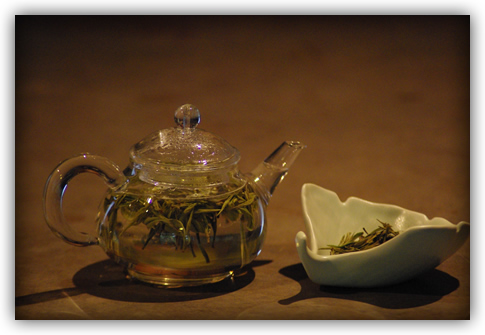
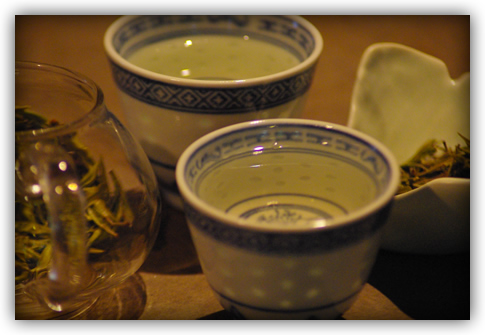
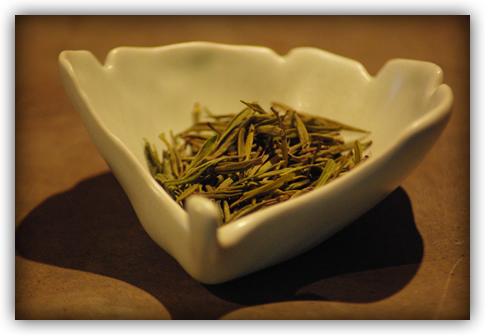
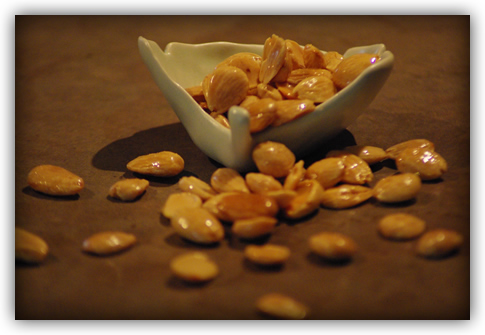
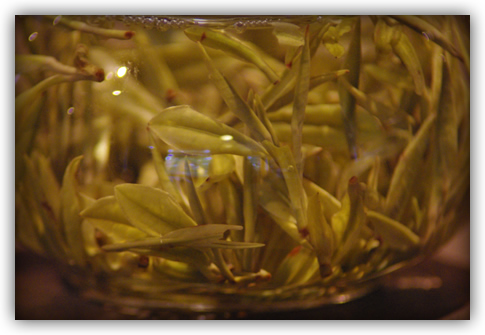
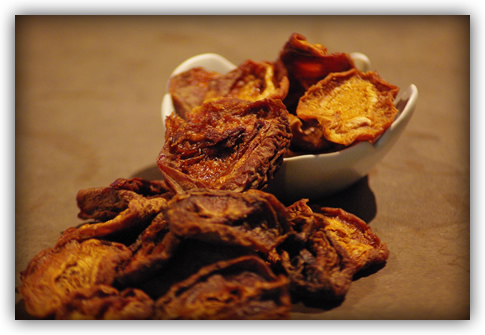
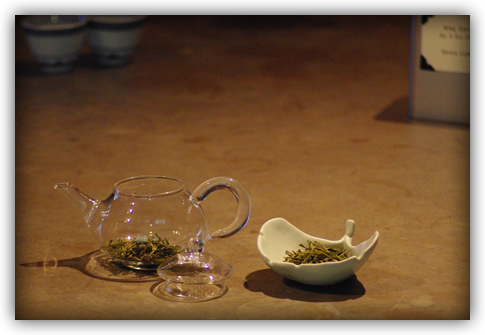

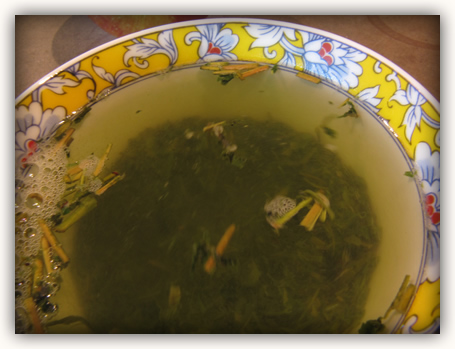



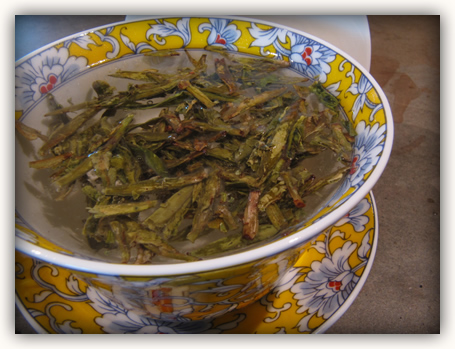


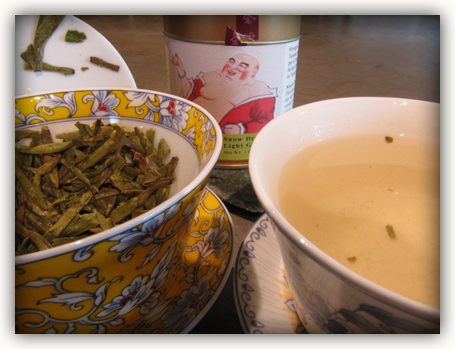


Recent Comments